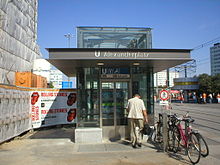Elevator
**History and Evolution of Elevators:**
– Earliest elevator reference by Vitruvius in 236 BC
– Elevators in Roman Colosseum in AD 80
– Elevator-like device in Book of Secrets in 1000
– Prototypes in 17th-century palace buildings
– Screw-drive elevator by Ivan Kulibin in 1793
– Steam-powered elevators in coal mines in mid-19th century
– Teagle elevator by Frost and Stutt in 1835
– Flying Chair elevator by Gaetano Genovese in 1845
– Hydraulic crane by Sir William Armstrong in 1846
– Safety elevator by Elisha Otis in 1852
**Technological Innovations in Elevator Design:**
– Standing rope control by Henry Waterman in 1850
– Electric elevator by Werner von Siemens in 1880
– Multiple elevators in a single shaft by Frank Sprague
– London Hydraulic Power Company founded in 1871
– Modern features like high-speed elevators, wheelchair access laws, and horizontal travel capabilities
– Development of floor control, automatic operation, and safety devices
– Recent innovations like permanent magnet motors and microprocessor controls
**Advanced Elevator Systems and Components:**
– Machine room-less (MRL) elevators
– Double-deck elevators
– Types of hoist mechanisms (traction, geared traction)
– Counterweight and traction systems
– Hydraulic elevators
– Electromagnetic propulsion systems
– Climbing elevators
**Elevator Traffic Calculations and Simulations:**
– Formulas for round-trip time calculations by various innovators
– Dispatcher-based simulation tools like Elevate
– Types of hoist mechanisms and their operational characteristics
– General analysis and software applications for elevator traffic calculations
– Traffic calculations to determine elevator system capacity
**Elevator Controls, Safety Features, and Emergency Procedures:**
– Evolution of elevator controls from manual to automatic systems
– Safety features like sensors on doors, nudge function, stop switch, and elevator telephone
– Emergency procedures for trapped passengers
– Regulations for elevator safety in case of fire
– General controls on modern passenger elevators for convenience and safety
This article needs additional citations for verification. (October 2023) |
An elevator (North American English) or lift (British English) is a machine that vertically transports people or freight between levels. They are typically powered by electric motors that drive traction cables and counterweight systems such as a hoist, although some pump hydraulic fluid to raise a cylindrical piston like a jack.


In agriculture and manufacturing, an elevator is any type of conveyor device used to lift materials in a continuous stream into bins or silos. Several types exist, such as the chain and bucket elevator, grain auger screw conveyor using the principle of Archimedes' screw, or the chain and paddles or forks of hay elevators. Languages other than English, such as Japanese, may refer to elevators by loanwords based on either elevator or lift. Wheelchair access laws often require elevators in new multistory buildings, especially where wheelchair ramps are not possible.
High-speed elevators are elevators that move faster than regular elevators and are common in skyscrapers and towers.
Some elevators can also travel horizontally in addition to the usual vertical motion.
